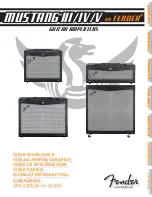
CBA Manual: H012161 Rev: 3
10
3.2
Connecting the line cord
i
i
CAUTION!
It is essential that the amplifier operates from a line source that does not
apply voltages and frequencies between the line conductors (or between
either line conductor and ground) that are outside the range detailed in the
specification sheet.
i
i
CAUTION!
Ensure that the line cord does not interfere with the operation of the rear
panel line-input circuit breaker(s).
3.3
Connecting the chassis ground cable
To improve EMC immunity, bond the amplifier to a good ground with a
conductor of 4 sq.mm or the equivalent earth braid, a ground post being
provided for this purpose on the rear panel. Although it provides an extra
measure of safety, this is
NOT
a protective earth. The protective earth is the
ground pin on the line supply connector(s).
3.4
Connecting the RF cables
i
i
CAUTION!
Ensure that the RF source is OFF when making connections.
i
i
CAUTION!
Ensure any cables and connectors mating with the RF input and RF output
connectors are of 50-ohm impedance, and are designed to handle the power
at the frequencies generated by the amplifier. Although very similar, 75-ohm
connectors must not be used.
Use cable with the lowest loss that is practical. The connectors should not be over-
tightened, and any tightening instructions for the connector should be observed.
Ensure that any bends in cables conform to the recommended minimum-bend-radius
of those cables, especially where the cables enter the RF connectors.
3.5
Connecting the Safety interlock
i
i
WARNING!
Use the safety interlock facility within danger areas.
If the amplifier is to be connected to an antenna, personnel may be exposed to non-
ionising radiation. In such systems, the safety interlock function should be used.
Connection (via the rear panel) is with a BNC-type connector. We recommend that
shielded cable is used for all interlock connections to ensure EMC immunity.
The current in the safety-interlock circuit is less than 1mA, so cable with a low current
capacity is suitable.











































